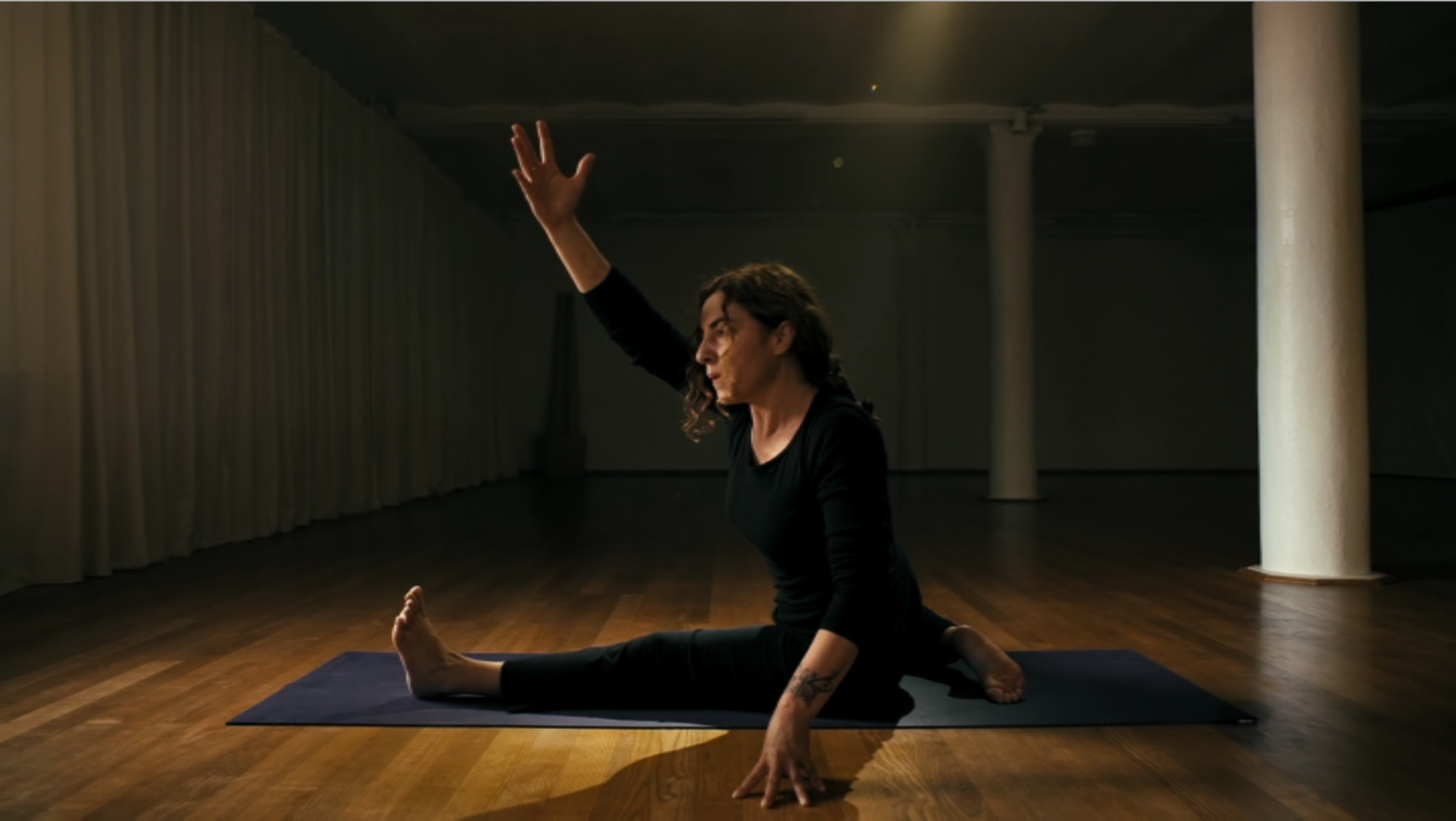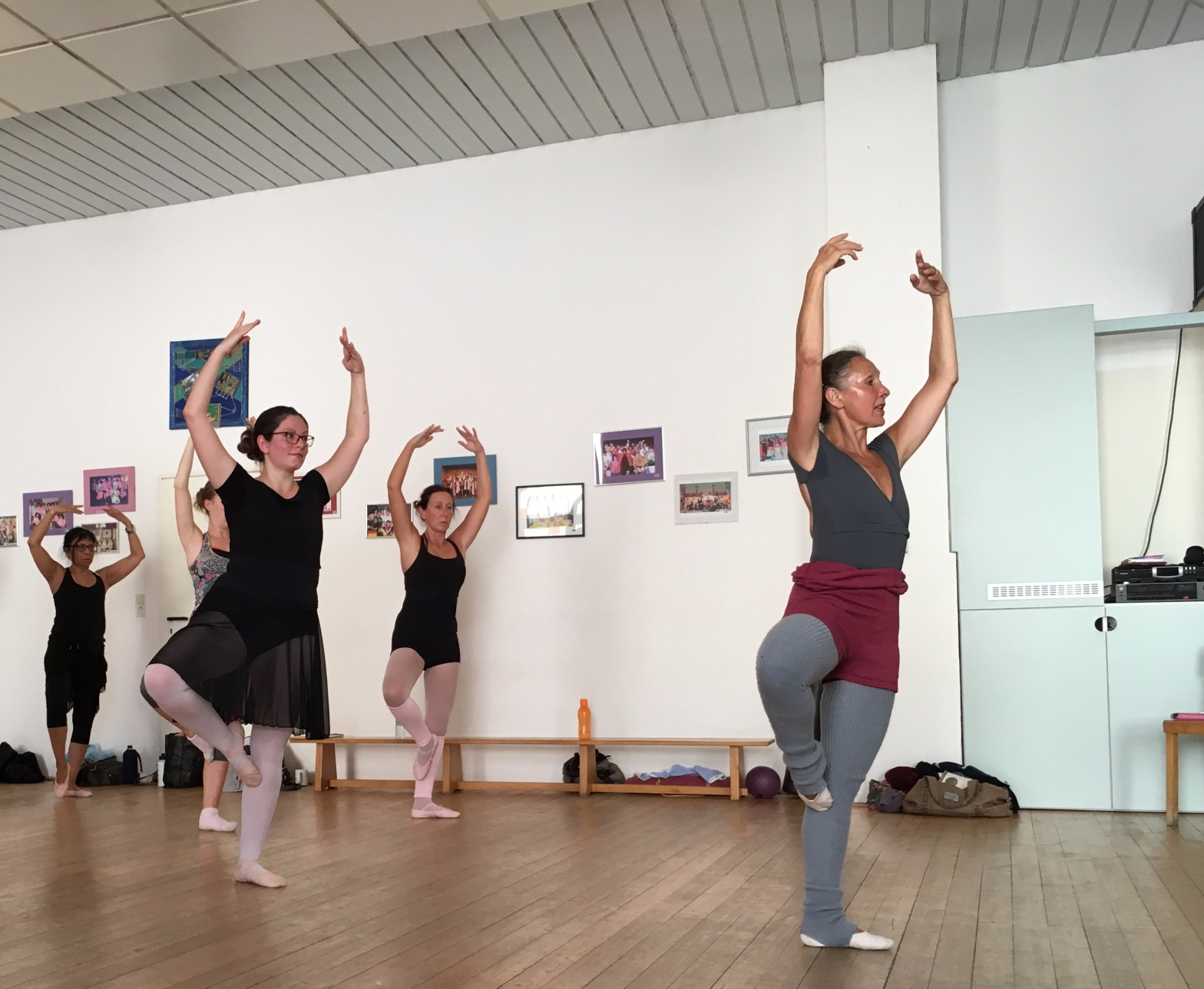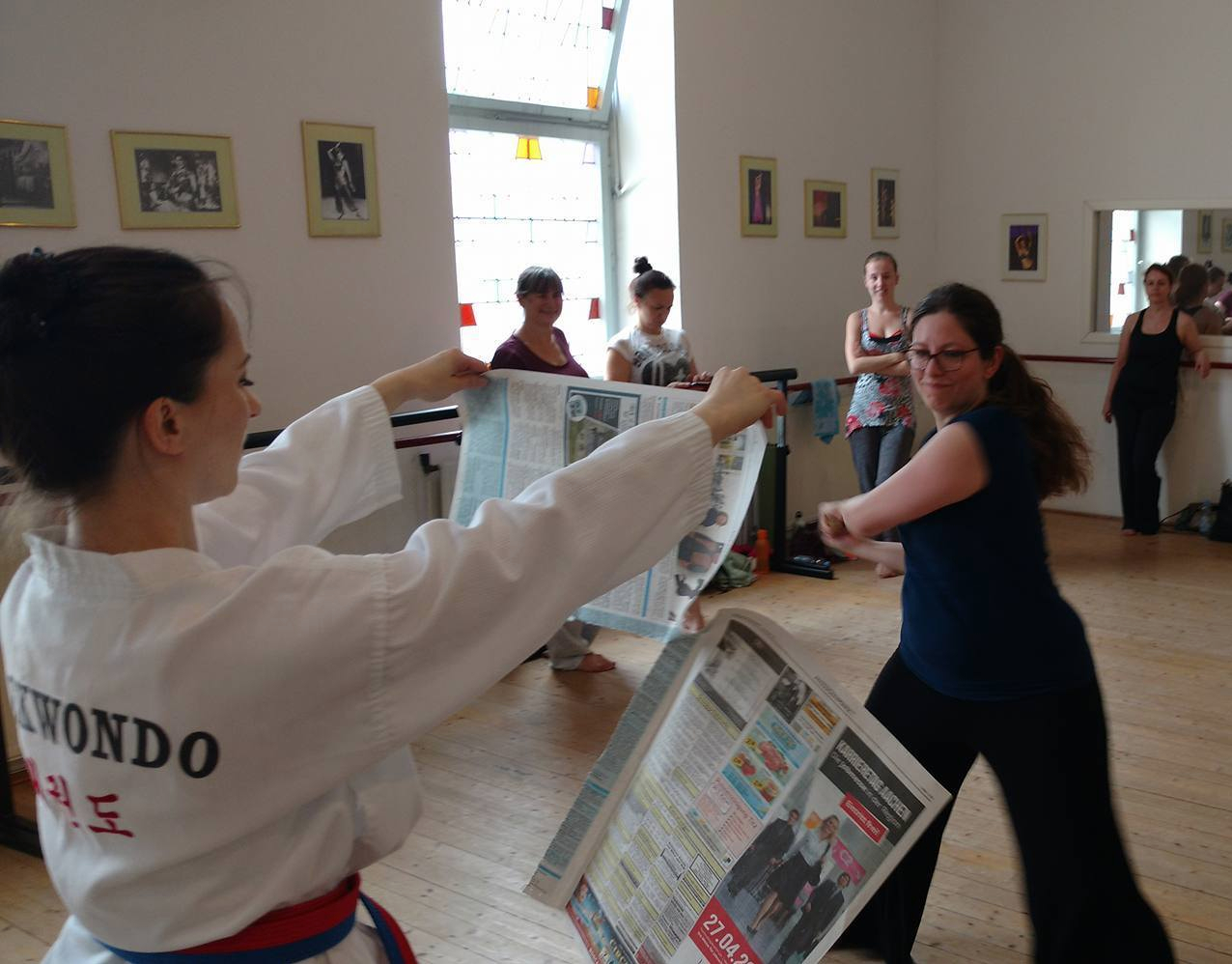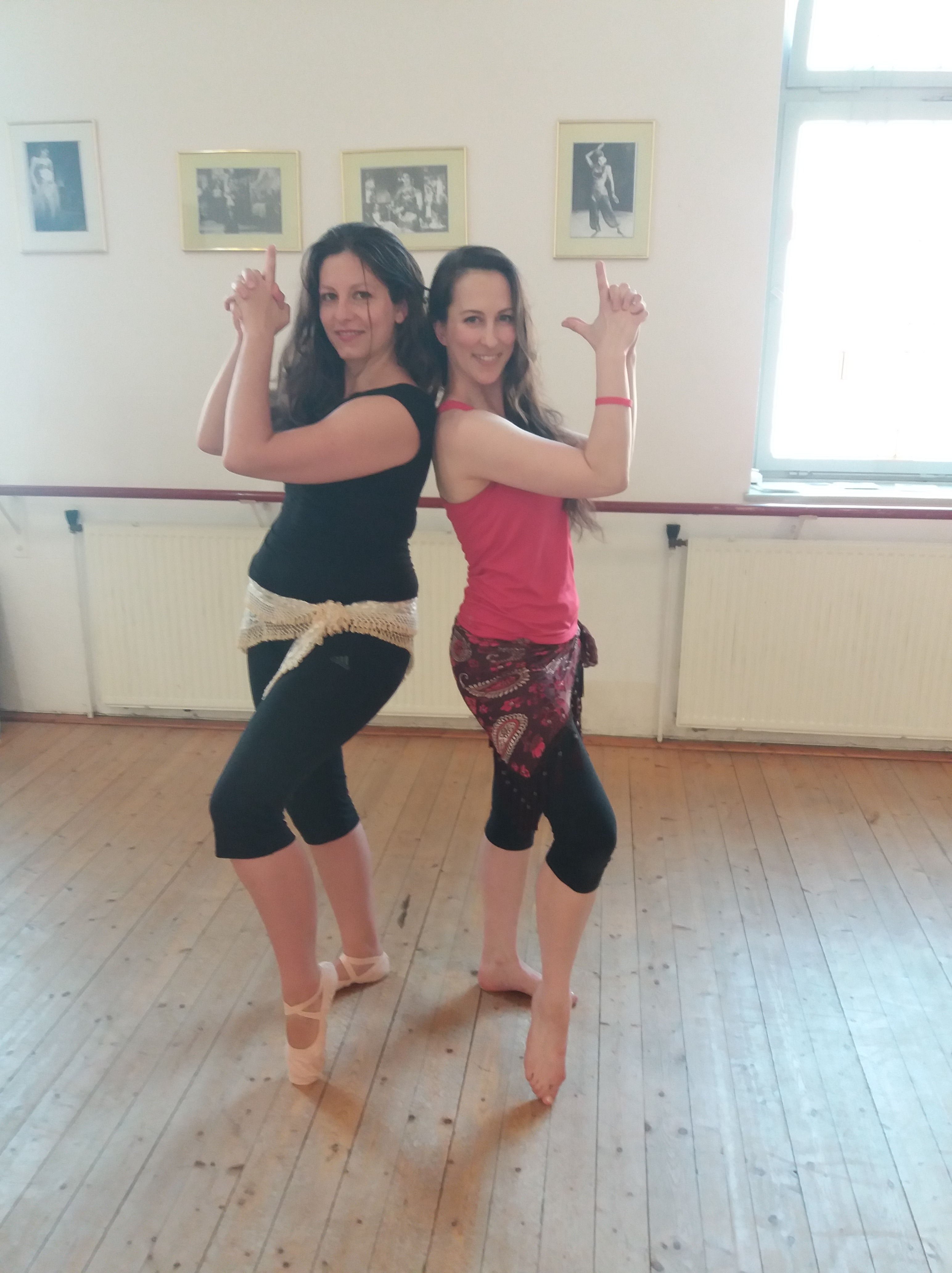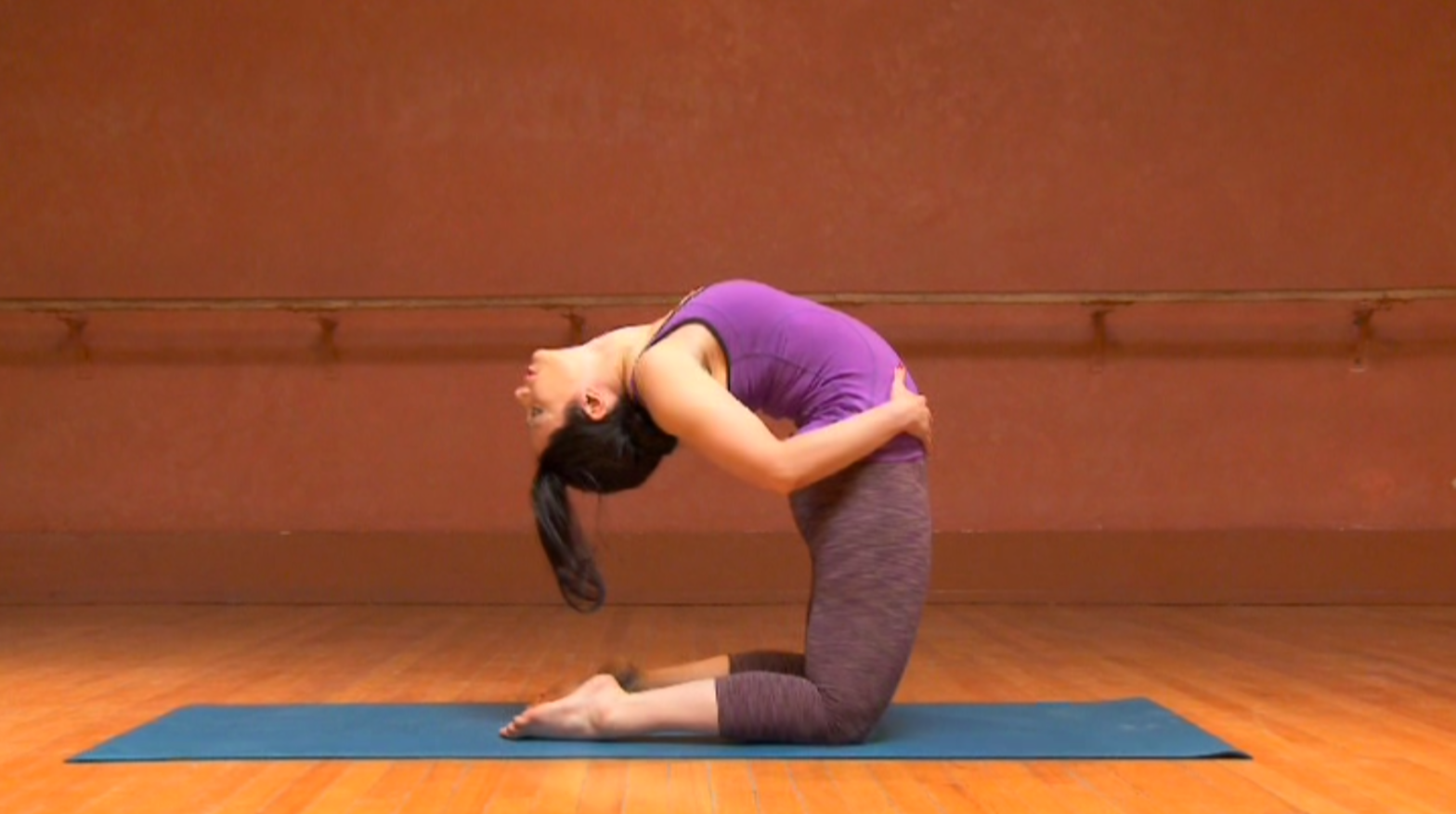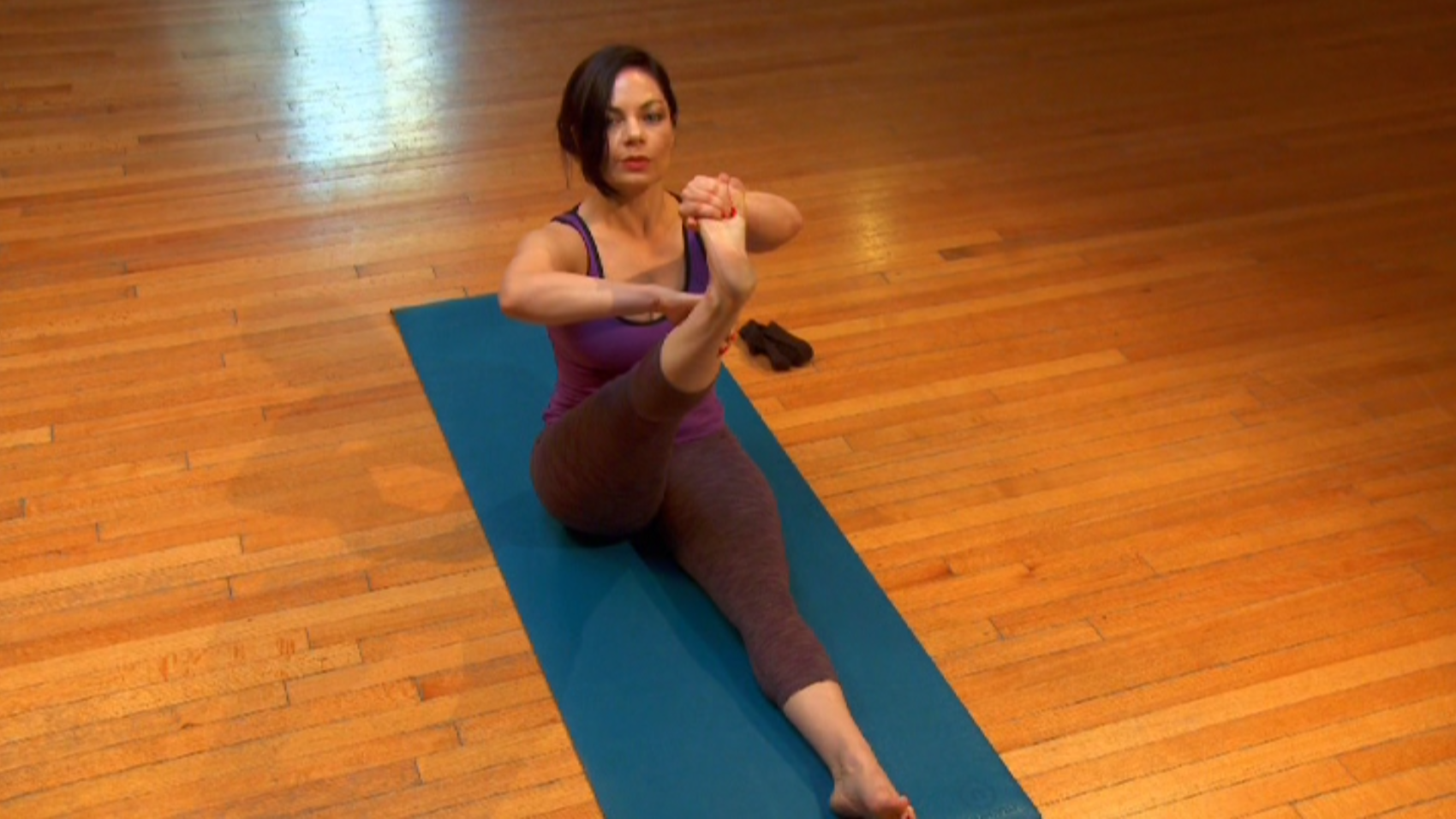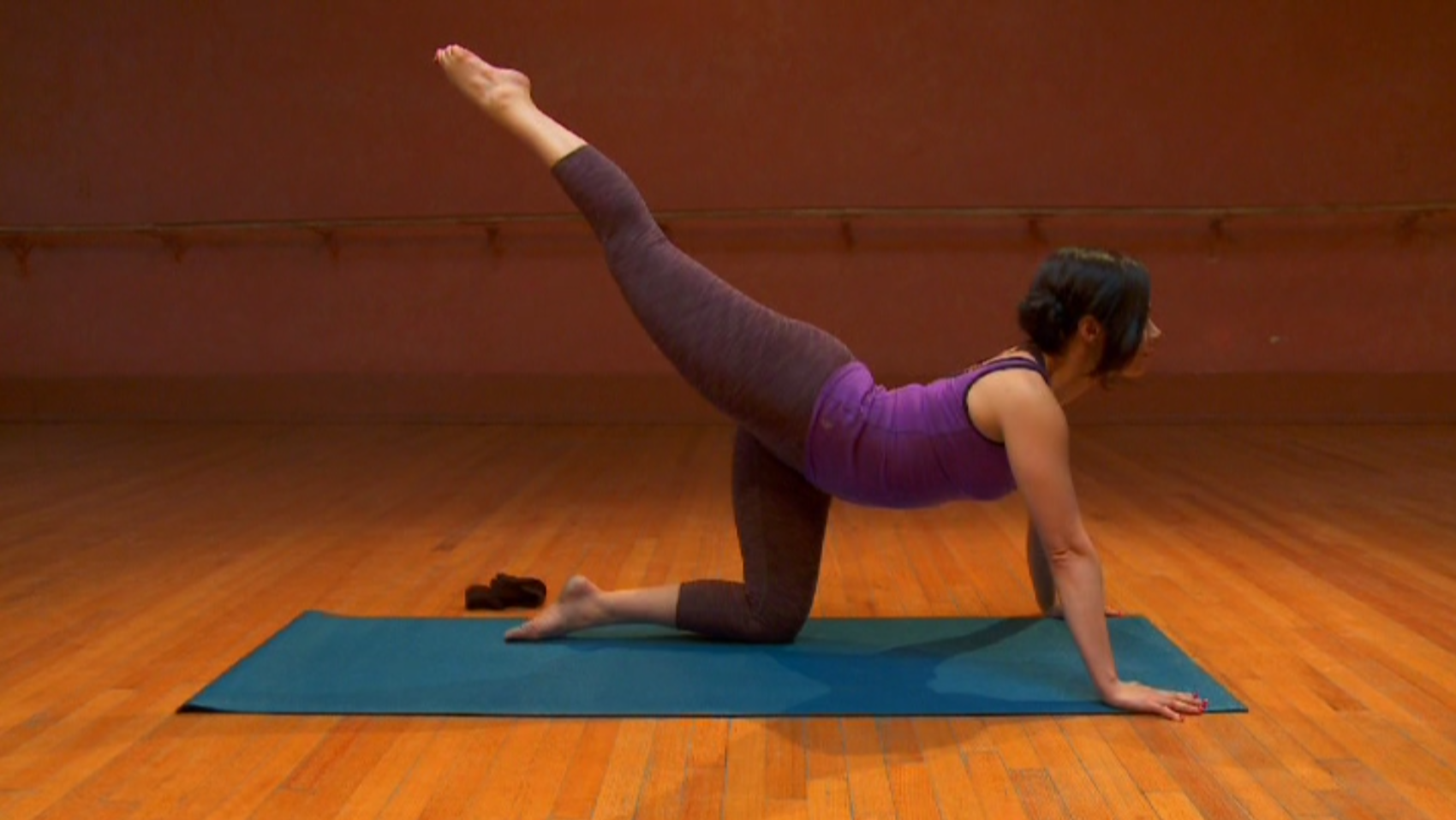Fluid Yoga is a DVD unlike any I have ever seen. Let me tell you why.
But before I do, I should tell you two things. First, I worked with a review copy — I had seen the DVD online, found it compelling, and asked to review it for the site. Second, I worked with the program when I wasn’t in shape. I hadn’t been able to do any exercise for a while, so I was not at my strongest.
In fact, I was due to have surgery early the next day, and I wanted to use my body before I couldn’t again for a while. And I chose Fluid Yoga because it seemed different from everything else in my collection.

The DVD was created by and features two Bremen-based yoga teachers, Klaus Busch and Tülin Sensan. It is a thing of beauty. I mean this seriously: it is filmed and edited like a gorgeous documentary, with calming nature shots easing the way into the practice sequences. The instructional segments are filmed in a a dark, sparse studio, but Busch and Sensan are lit well enough that it is always possible to see what they are doing. The film quality is very high definition, unlike anything I’ve seen in an exercise DVD before. And the entire program, all the way through, is accompanied by gentle, unobtrusively beautiful guitar music.
I’m going on about what might seem like superficial things because I love well-crafted work. And if you read this blog, you know I really appreciate it when people take care in making DVDs. I’ll add that while the video is PAL, it has both English and German tracks (as well as music only), and as far as I can tell is region free. I worked with the English track, which is quite good, with only a few tiny nonnative moments.
Now to the practice itself. It’s a little hard to find the right words for it. As you might guess, this is a flowing yoga practice, and it is built around many of the typical yoga poses. But if you are picturing vinyasa yoga, this is not it.
Fluid Yoga has slow, but often quite challenging sequences. Busch and Sensan move like dancers: every placement of the hands or sweep of the arms is done with intention and precision. The quality of the movement sometimes reminded me of tai chi, often of flamenco too. They will often make multiple adjustments to a single position, using breath, soft arching of the back, and spiraling motions to reach different points. The focus seems not to be so much on going deeper into positions as it is on using tiny movements to explore a position’s possibilities.

At first I thought that the programme would be quite easy and passive, or at most challenging in the way yin yoga is. This is not the case. There are sequences that require you to move slowly in a balance, which I suspect will take quite a bit of practice to do halfway as beautifully as the instructors. There were also intense stretches and variations on plow pose.
The 90-minute DVD is composed of a brief Introduction, five practice sequences, a deep guided relaxation, a four-minute Bonus that is essentially a song track with inspiring scenery and yoga poses, and a brief lexicon of yoga terms. The sequences are:
- Sun Salutation (quite gentle, slow variation on a sun salutation)
- Half Moon (balancing and standing moves centered on the half moon)
- Moon Salutation (plow pose, shoulder stands, and boat pose variations)
- Forward Bends (seated forward bends with lots of tiny variations that get a very deep stretch)
- Lying Trees (variations on tree pose lying down, intense leg stretches)
Every practice sequence is done fully on one side, then on the other side. I sometimes found myself with my back to the screen when I was doing the practice for the first time, so next time I will check which way I should face when I begin. In general, it would be a good idea to watch this video before working with it, since it is so different from other programs.
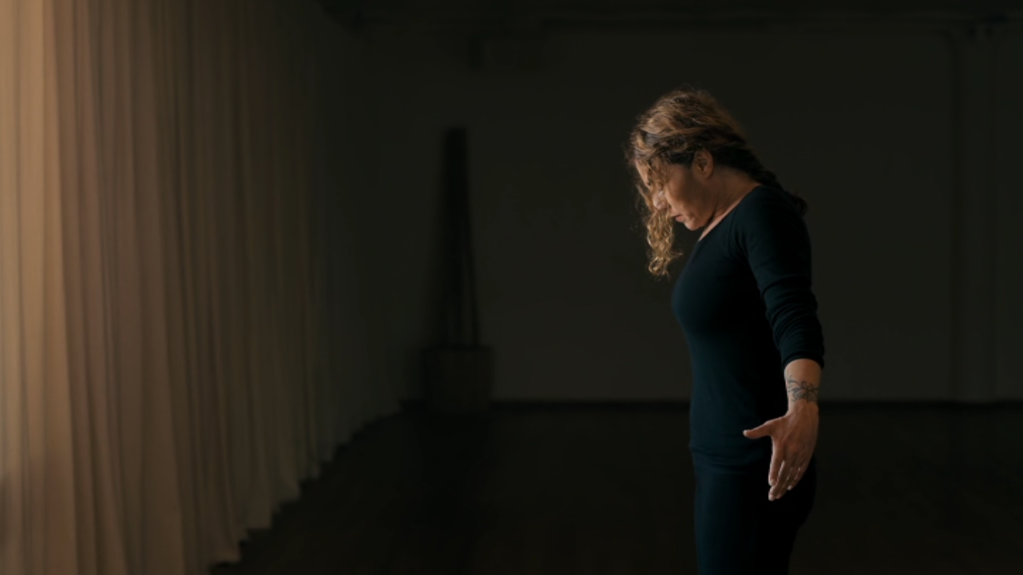
My favourite sequences were the forward bends and the lying trees, as they reminded me of the kinds of exercises I’ve done in ballet classes and stretch programs. My least favourite was the moon salutation. I usually love shoulder stands, but in this case the lengthy time spent in plow pose made my nape sore for a few days. (Take it easy when you do this, is my advice.)
Overall, Fluid Yoga was a deeply enjoyable practice. The beautiful music and cinematography were soothing, and made it feel more like a meditative dance than like a workout. Whereas in regular yoga practice I often want to push deeper into stretches, with this DVD I felt motivated to emulate the instructors’ graceful, soft movements. It’s a DVD to grow into too, with balances that are surprisingly challenging because done so slowly.
I would recommend Fluid Yoga to anyone who wants to be transported while doing yoga, or who is looking for programs that focus on precise movements and subtle modifications. I would also very highly recommend it to anyone who dances. The core work and stretches are precisely the kind dancers need, and the aesthetic makes yoga feel like dance.
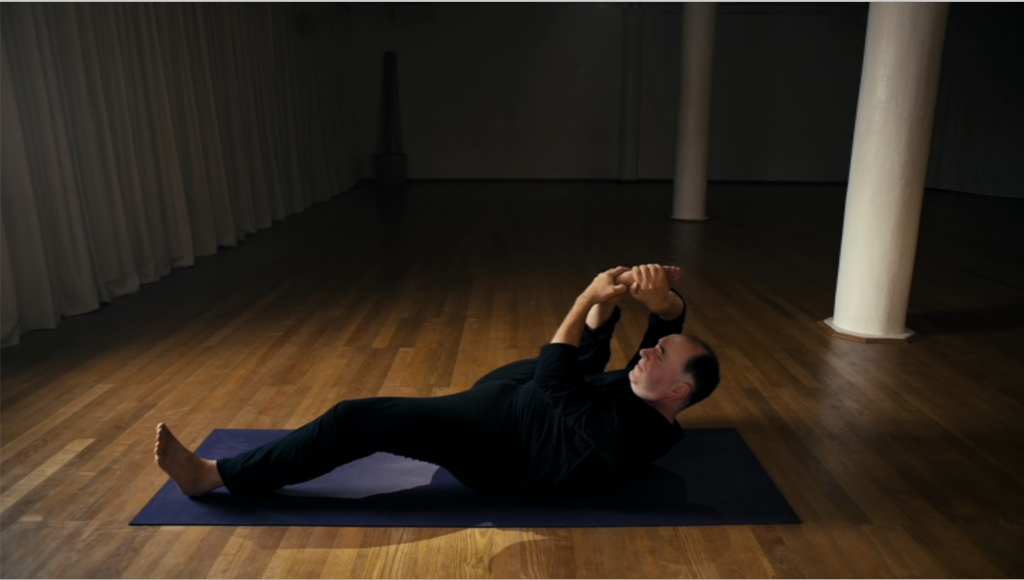
I mentioned at the start of this post that I did this program as my last bit of exercise pre-surgery. Doing Fluid Yoga that night really felt like a gift to myself. It allayed much anxiety, helped me feel at home in my body, and helped me sleep well. I’m looking forward to continuing the exploration.
You can find Klaus Busch and Tülin Sensan’s website here.
